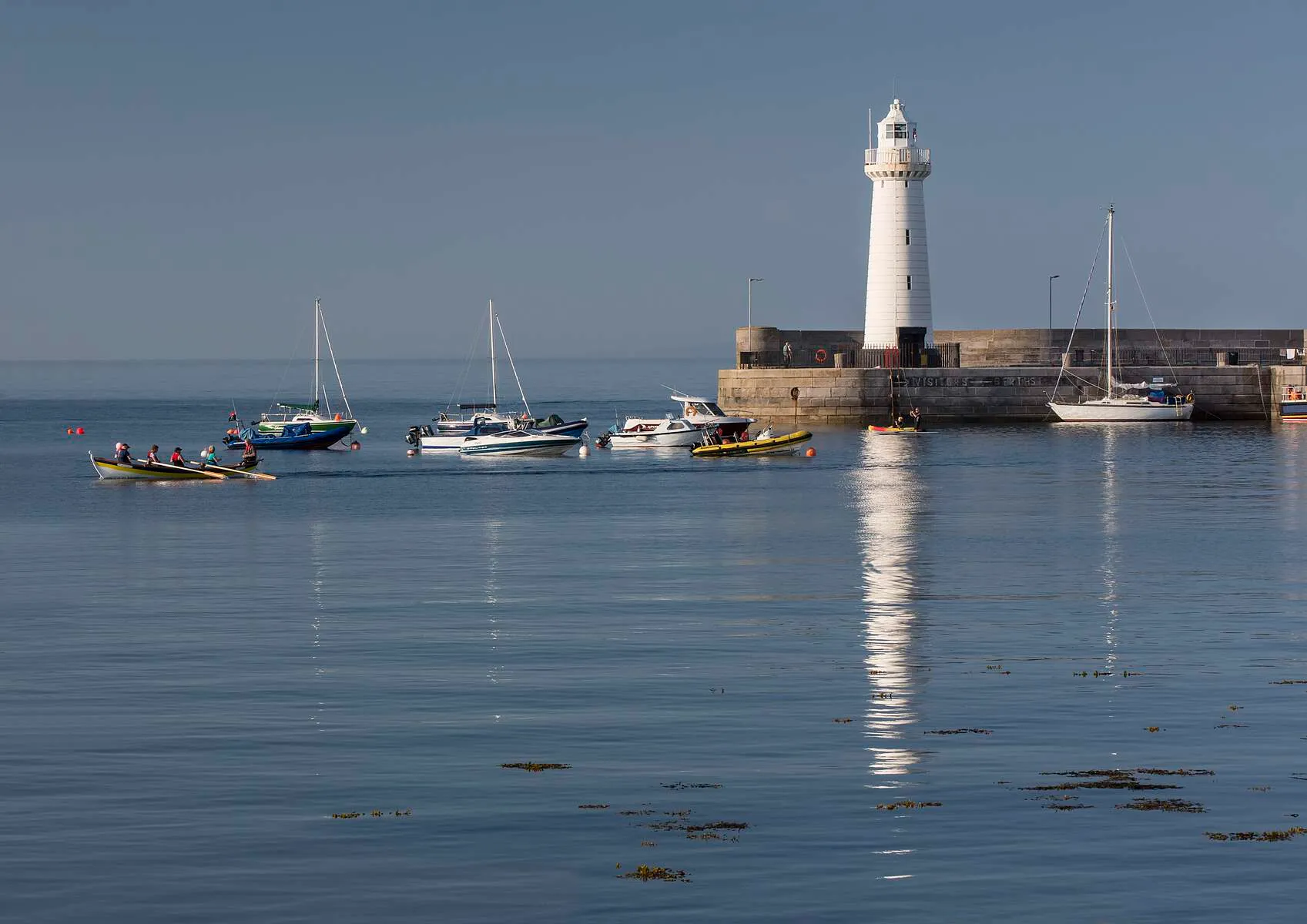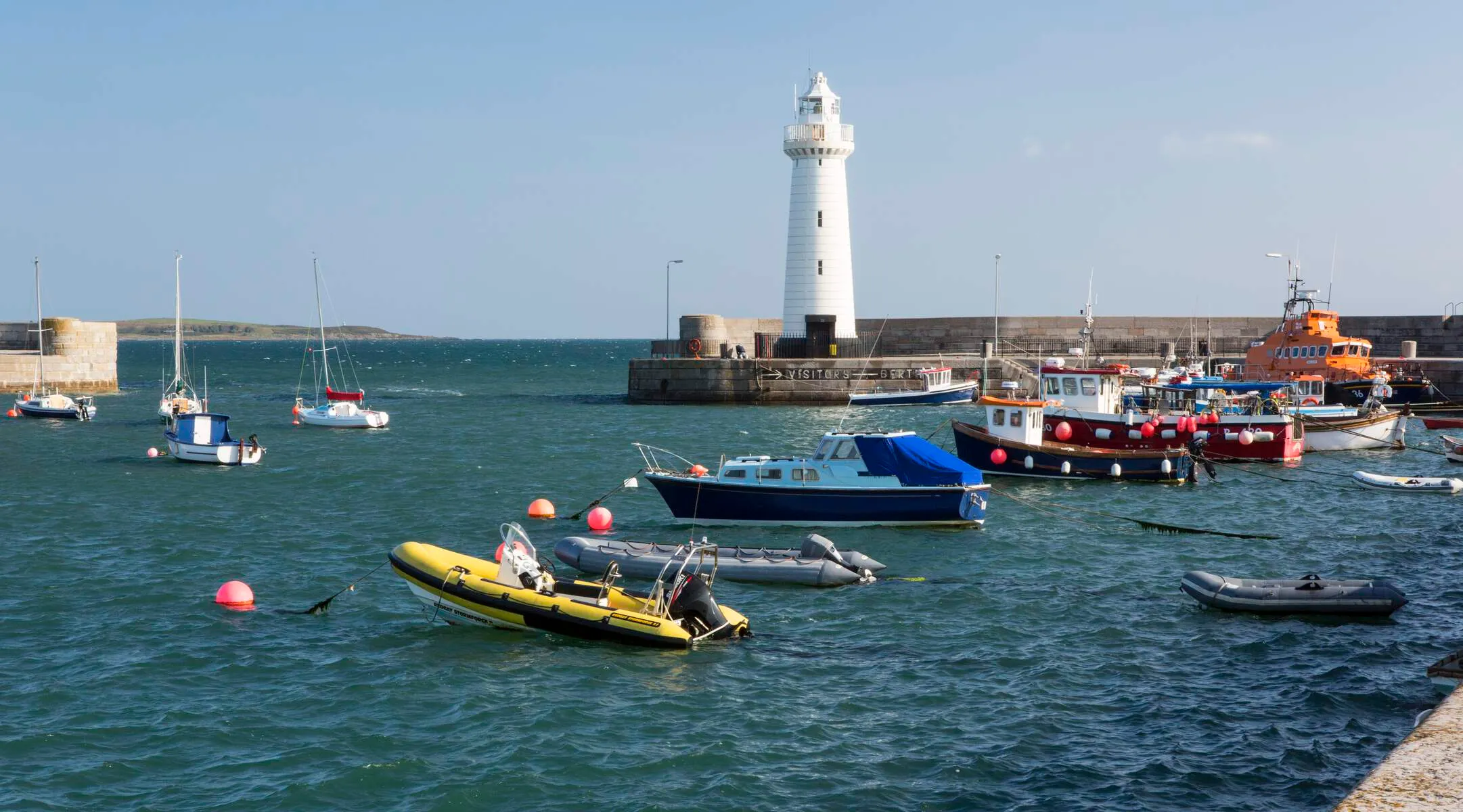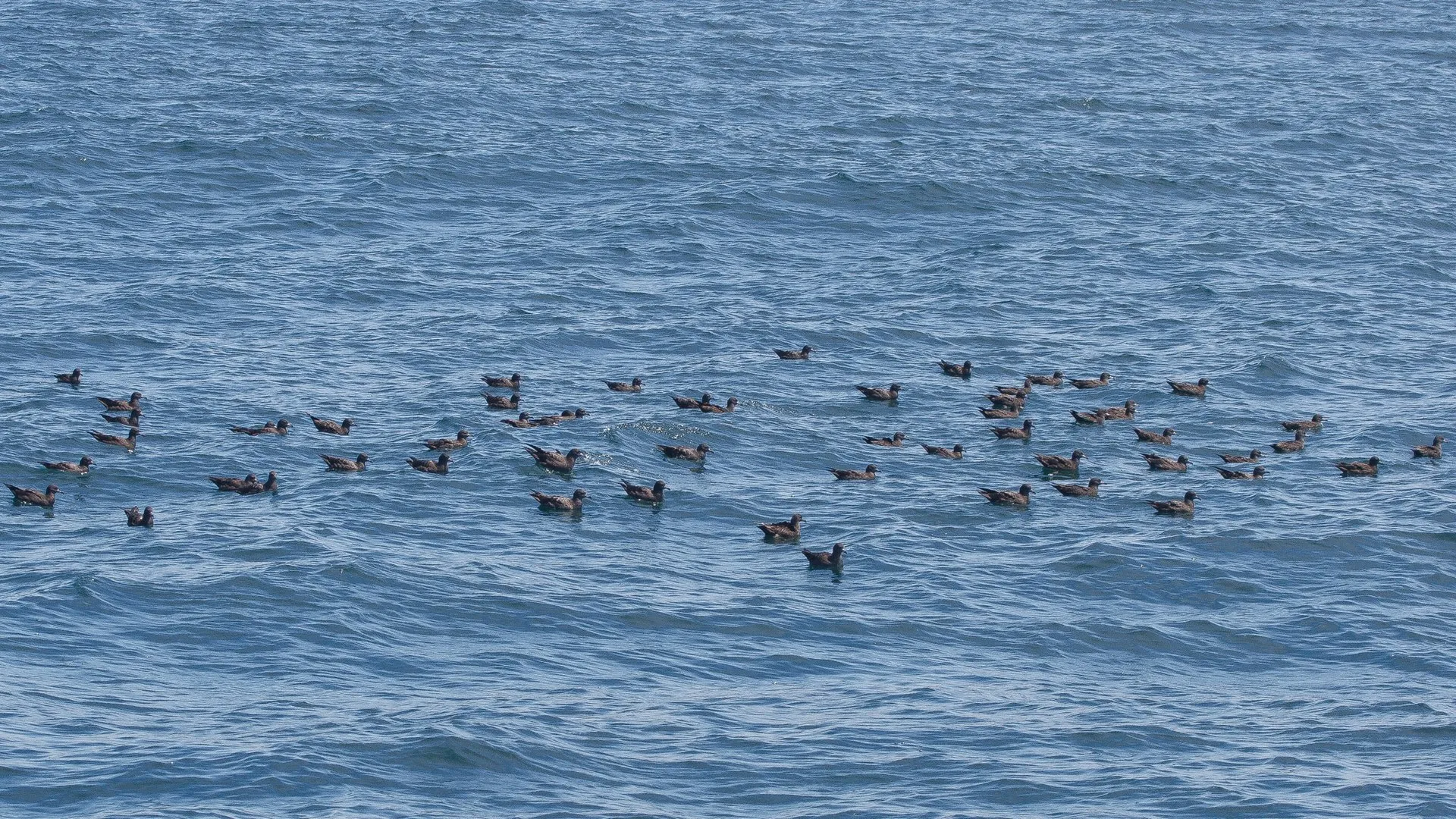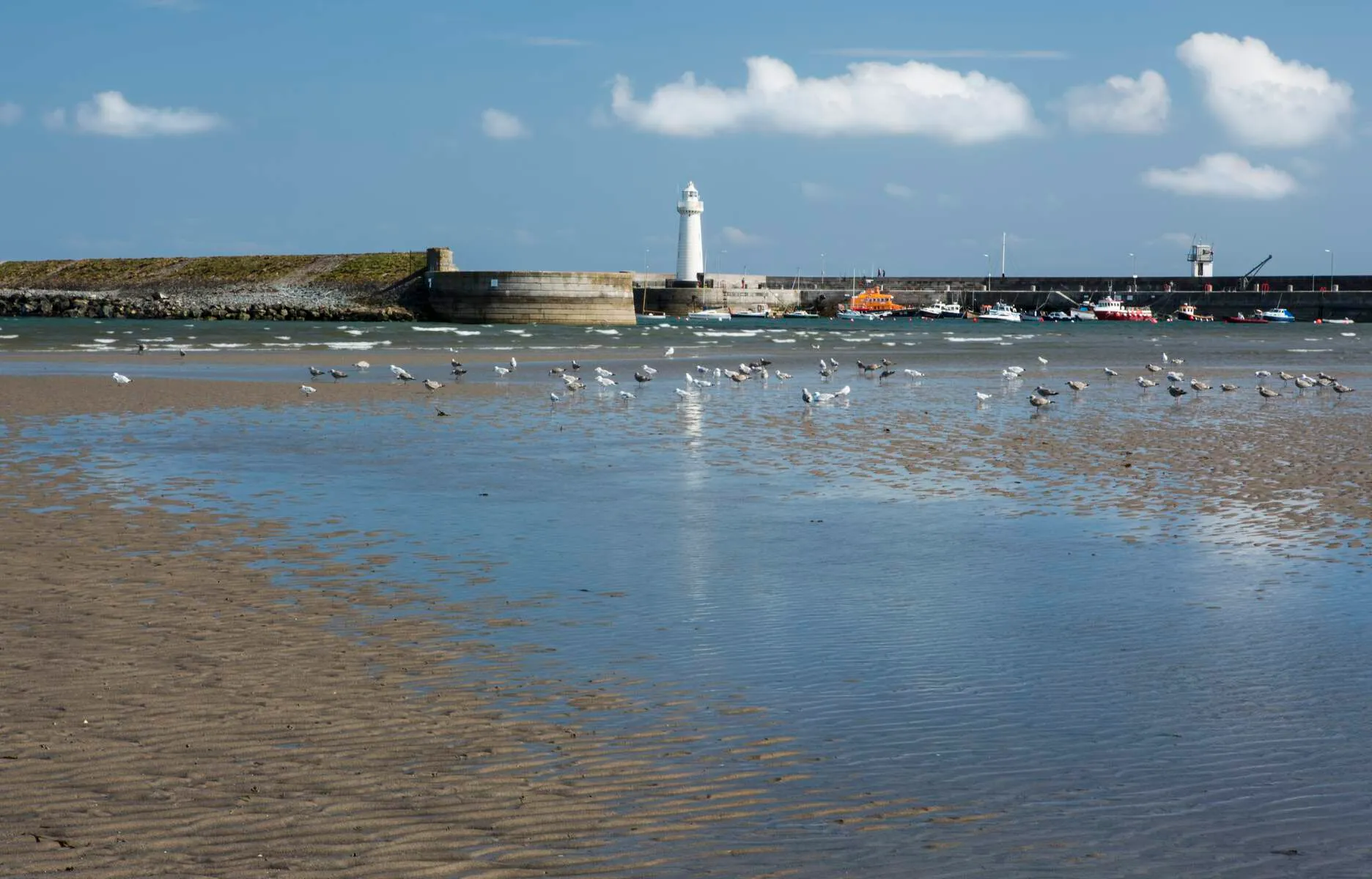Perched on Northern Ireland's northeast coast where the Ards Peninsula meets the Irish Sea, Donaghadee offers a postcard-perfect blend of history, seafaring spirit, and quiet charm. On clear days, the distant Scottish headlands shimmer just 19 miles offshore - a reminder of this town's historic role as a maritime crossroads. Wander its twin piers framing the harbor, where fishing boats bob beside century-old warehouses, or climb the limestone steps of the 1836 lighthouse, once the first in Ireland to blaze with electric light. This unassuming coastal gem wears its heritage lightly: Grace Neill's pub (founded in 1611) still pours pints under oak beams, while the Motte hilltop folly guards views over Copeland Islands and Strangford Lough, a haven for migrating Arctic terns and brent geese.
For travelers craving more than just a glance, Donaghadee rewards with hidden delights. Savor fresh oysters at Pier36 as gulls wheel overhead, or hike the coastal path past The Commons park to spot seals basking on rocky shores. Come summer, the town pulses with festivals and live music in restored fisherman's cottages - perfect for a nightcap before driving the short stretch to nearby Bangor or Belfast. Yet its true magic lies in moments like these: watching the sunset turn the sea to liquid gold while imagining the voyagers who once sailed from here toward distant shores, forever binding this tiny harbor town to the windswept stories of the Irish Sea.
Jump to section:
Things to See and Do

Donaghadee Lighthouse
A 16-meter-tall lighthouse built in 1836 from cut limestone, marking the first Irish lighthouse to use electric power. Offers historical insights and coastal views.
Strangford Lough Coastal Routes
Explore the UK's largest sea lough from Donaghadee's shores, known for birdwatching (Brent geese) and protected marine biodiversity.

Donaghadee Harbour
Dating back to the 17th century, this historic harbor features two piers forming a 150-foot-wide entrance. Offers boat views and maritime history.
The Motte Historical Site
Ancient Norman motte-and-bailey site with a 19th-century folly atop the hill, providing panoramic views of Donaghadee and Copeland Islands.

Copeland Distillery
A local distillery where visitors can explore production processes while enjoying nearby marina and coastal scenery.
RNLI Donaghadee Lifeboat Station
Operational since 1910, showcasing the preserved Sir Samuel Kelly lifeboat. Provides voluntary maritime rescue services year-round.
Donaghadee Moat & Gunpowder Store
Built in 1818 to store explosives during harbor construction, this site includes Bronze Age defensive earthworks overlooking Copeland Islands.
Cockle Row Cottages
Restored 20th-century fisherman's cottages offering maritime heritage tours with crafts, live music events, and family-friendly activities.
The Commons Park
A 16-acre park featuring playgrounds, tennis courts, coastal walks, exercise equipment, and scenic sea views near the town center.

Donaghadee Pier & Waterfront
Popular spot adjacent to pubs like Pier36, offering harbor strolls with casual dining options and maritime ambiance.

Copeland Bird Observatory (Lighthouse Island)
Situated on nearby Lighthouse Island, this observatory tracks migratory birds like Manx Shearwater and Arctic Terns.
Donaghadee Sailing Club
Hosts sailing enthusiasts with a modern clubhouse since 2009, set near the harbor's active waters.

Donaghadee Beach
Scenic coastal beach offering serene Irish Sea views, ideal for relaxation and photography.
Getting There
By Air
-
The nearest airports are Belfast International Airport (BFS) and George Best Belfast City Airport (BHD), both located near Belfast, Northern Ireland.
-
From these airports, you can rent a car or take a taxi or bus to Donaghadee.
By Car
-
Donaghadee is located in County Down, Northern Ireland, and can be reached by car via the A2 road from Belfast or other nearby towns.
-
Approximate travel times:
-
From Belfast: 30-40 minutes
-
From Bangor: 20-30 minutes
By Public Transportation
-
You can use public buses or trains to reach Donaghadee from nearby towns, such as Bangor or Belfast.
-
Specific bus routes and train stations are not available, but you can check with local transportation providers for more information.
Events & Festivals 2025
There are currently no events listed. If you would like to add an event, please contact us.
History
Donaghadee's history dates back to the Bronze Age, when the site of the present-day town was fortified as a Rath. Later, it was improved and provided protection against Viking raids. The Normans reinforced it in the 12th and 13th centuries during their period in power. The town's name comes from the Irish "Domhnach Daoi", meaning either "church of Daoi" or "church of the motte".
In the early 17th century, Hugh Montgomery settled Scottish Protestants in Donaghadee as part of the Plantation of Ulster, and it began to grow into a small town. The harbour, which dates back to the 17th century, played a crucial role in the town's development, with trade based on the Packet Service between Donaghadee and Portpatrick in Wigtownshire. A new harbour was built in 1821, with the foundation stone laid by the Marquis of Downshire, and the iconic lighthouse was completed in the late 1830s.
Donaghadee's strategic location made it a significant point of entry for travellers from Great Britain to Ireland until the mid-19th century. The town also gained notoriety as a destination for couples eloping to marry in Scotland, with Portpatrick earning the nickname "Gretna Green for Ireland". During this period, Donaghadee was a bustling port, with a daily packet boat service to Scotland.
The town's history is also marked by its role in the Irish Rebellion of 1798. On Pike Sunday, 10 June 1798, a force of United Irishmen attempted to occupy the nearby town of Newtownards but were defeated. Donaghadee was also involved in the rebellion, with several locals participating in the uprising.
In the 19th and 20th centuries, Donaghadee developed as a major holiday resort, attracting merchants from Belfast who sought to escape the city for a holiday by the sea. The town's harbour continued to play an important role, with the lifeboat station being established in 1910. One notable rescue took place on 31 January 1953, when the lifeboat rescued survivors from the stricken Larne-Stranraer car ferry, MV Princess Victoria.
The Motte, or Moat, is one of Donaghadee's most prominent features, dating back to 1818 when it was built to house explosives for the harbour construction. Today, it stands in a park, offering views across the town and seawards towards the Copeland Islands. The original mound was of Norman origin, when a motte and bailey stood on the site.
Donaghadee Parish Church, which dates back to 1626, is another significant historical site in the town. The churchyard contains many headstones and memorials, including those of notable locals such as William Morison, who was executed for his role in the 1798 rebellion, and Jean Mackgwear, whose stone is one of the oldest in the churchyard.
Captain John Paul Jones, a founder of the US Navy, won a significant battle off the coast of Donaghadee in 1778. The town's history is also marked by its connections to notable individuals, including Sarah Grand, author and feminist, and Bear Grylls, adventurer and television presenter, who has family ties to the town.
The harbour remains a central part of Donaghadee's identity, with its iconic lighthouse and lifeboat station continuing to play important roles in the town's maritime heritage. The town's rich history is reflected in its many historical buildings, including the former Donaghadee Town Hall, which dates back to around 1770, and the Manor House, which is one of several historic houses in the town.
